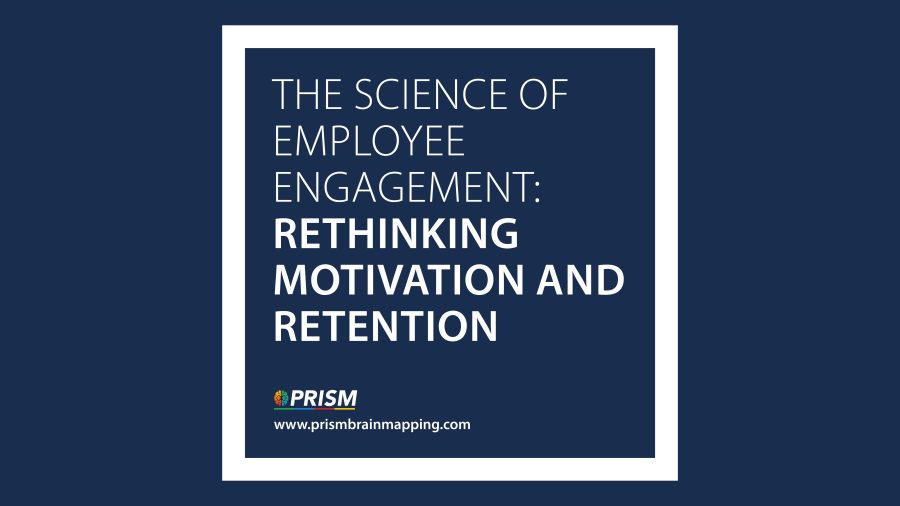Rethinking Motivation and Retention
In today’s workplace, where hybrid work, automation and shifting generational expectations are reshaping the employee experience, the science of employee engagement has never been more relevant. Engagement is not just about perks and policies, it’s about understanding what truly drives people to perform, stay, and thrive at work.

Despite countless initiatives, engagement levels remain worryingly low. Gallup’s 2024 State of the Global Workplace report shows that only 23% of employees worldwide are actively engaged. This persistent gap suggests it’s time to look deeper, beyond surface level solutions and explore how behavioural science and neuroscience can provide a more sustainable, personalised approach.
The Science of Employee Engagement and Behaviour
At its core, the science of employee engagement is about behaviour. Engaged employees demonstrate proactive behaviours: they show commitment, take initiative, and foster collaboration. Disengaged ones withdraw, resist change, and contribute less to team outcomes.
Behavioural preferences, how individuals naturally think, communicate, and act play a critical role here. Tools like PRISM Brain Mapping help organisations understand these preferences by offering insight into both natural behaviours and adapted behaviours how someone modifies their approach in response to role demands or workplace pressures.
When an individual’s role, team environment, and leadership style align with their behavioural preferences, they are more likely to feel energised and fulfilled, key ingredients for engagement.
Tailoring Motivation to Behavioural Preferences
A common flaw in engagement strategies is the assumption that all employees are motivated in the same way. But motivation is deeply personal, and the science of employee engagement shows that understanding individual preferences is essential to unlocking it.
For example, someone with a preference for structure and clarity may find motivation in well-defined goals, measurable targets, and consistency. On the other hand, an individual drawn to novelty and risk-taking may prefer open-ended projects, fast paced change, and creative freedom.
When leaders understand these drivers, they can tailor how they communicate, delegate, and recognise performance creating more meaningful and motivating experiences for each person. This approach also supports greater inclusion, by recognising behavioural diversity as a key part of team success.

Behavioural Flexibility and Workplace Satisfaction
While knowing someone’s natural style is valuable, the science of employee engagement also highlights the importance of behavioural flexibility, the ability to adapt behaviour to suit different tasks, roles, or people.
Flexible employees can shift their communication style, adjust to new team dynamics, or take on unfamiliar challenges without becoming overwhelmed or disengaged. This behavioural agility is increasingly vital in today’s environment of continuous change and cross-functional collaboration.
From a satisfaction perspective, flexibility enables growth. When employees can stretch beyond their default preferences, without stress or burnout, they feel more capable, resilient, and connected to their development goals. This sense of progress and self-efficacy is strongly correlated with engagement and retention.
Aligning Behaviour and Role Fit to Improve Retention
High turnover often reflects a mismatch between a person’s behavioural profile and the role they’re in. For example, a highly analytical, risk conscious employee may feel out of sync in a high ambiguity, fast paced sales environment. Similarly, an extroverted, ideas driven person might find a solitary, detail heavy role unfulfilling.
The science of employee engagement supports the idea that retention improves when people feel like they are in roles that match their behavioural strengths and where their effort feels purposeful and valued.
Using behavioural profiling tools like PRISM during recruitment, onboarding, and internal mobility discussions helps ensure better alignment and long-term satisfaction.
Putting the Science into Practice: 5 Practical Steps
To unlock the full value of the science of employee engagement, organisations can take the following evidence-based steps:
- Use behavioural tools to go beyond personality. Tools like PRISM reveal both natural tendencies and how individuals adapt in different settings providing a more complete picture than traditional personality tests.
- Equip leaders with behavioural insight. Managers trained in behavioural preferences and flexibility can tailor their leadership style to individual needs, improving motivation and trust.
- Build behavioural flexibility into development plans. Help employees explore how they can expand their behavioural range through coaching, mentoring or learning experiences.
- Design engagement strategies for behavioural diversity. Move beyond one size fits all solutions and create engagement touchpoints that reflect the varied ways people feel valued and included.
- Align roles and projects to behavioural fit. Integrate behavioural data into job design, team composition, and succession planning to optimise long-term satisfaction and reduce attrition.

Exploring Behavioural Flexibility
For a deeper dive into how behavioural range supports workplace performance, check out our recent article on personalised learning and development.
The Future of Engagement is Personalised
The science of employee engagement is not about doing more, it’s about doing what works, for the people you have. By understanding what naturally energises and challenges your employees, and by encouraging adaptive behaviours, you can create a more fulfilling, resilient and high performing workplace.
As organisations compete for talent and navigate new ways of working, those that personalise the employee experience through behavioural insight will be best placed to engage, retain, and grow their people both now and in the future.

